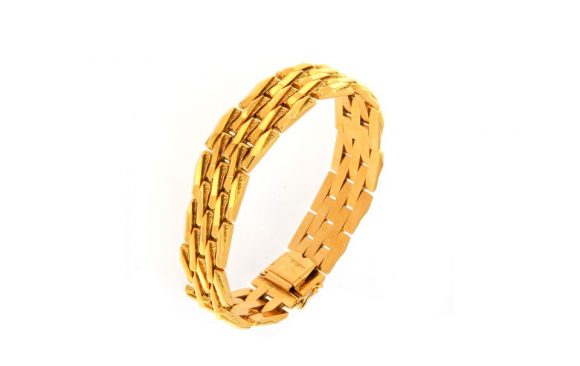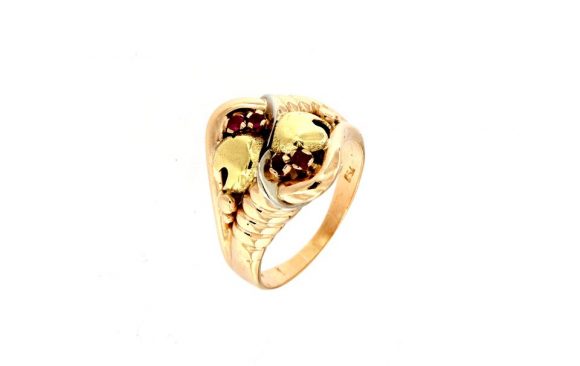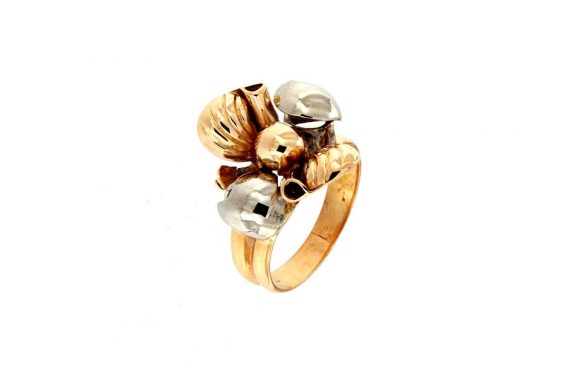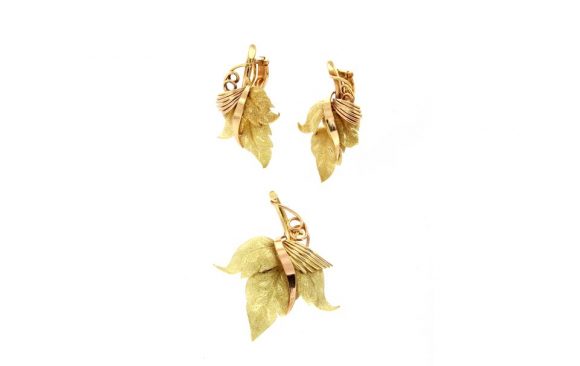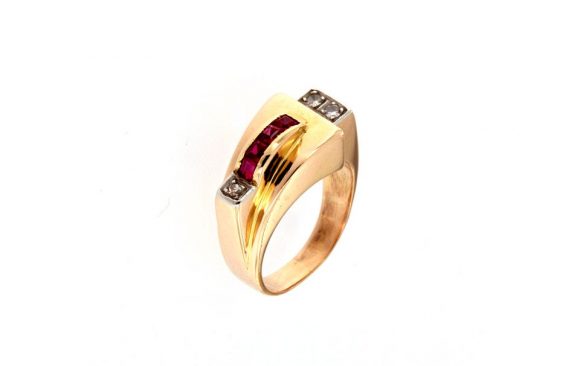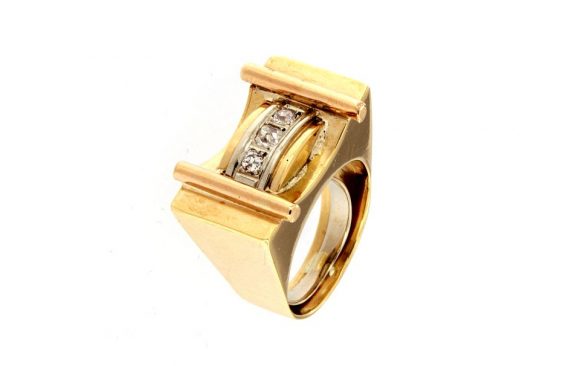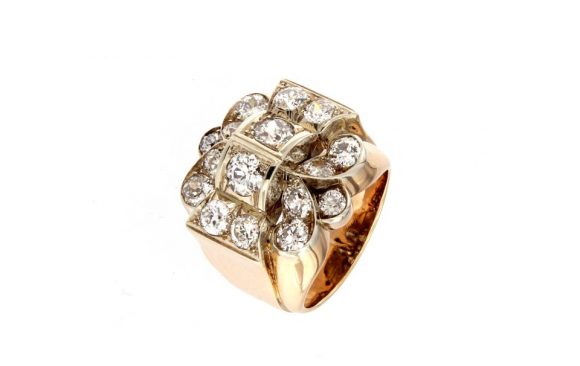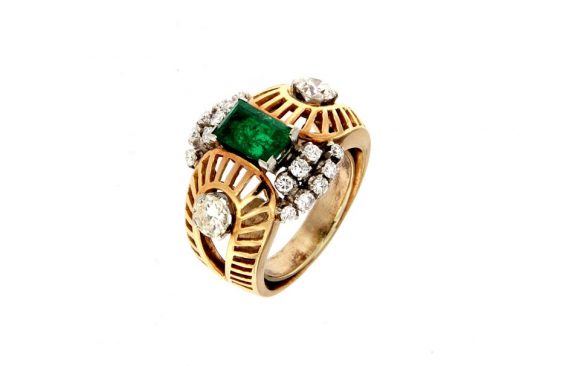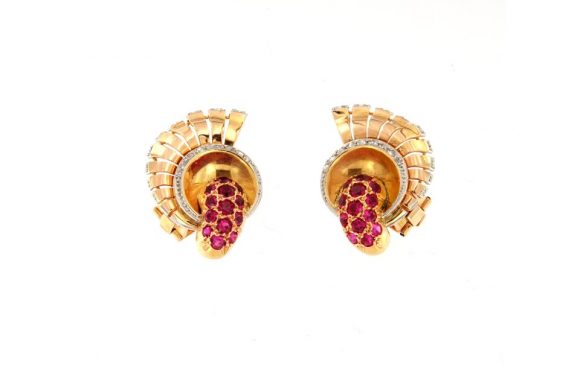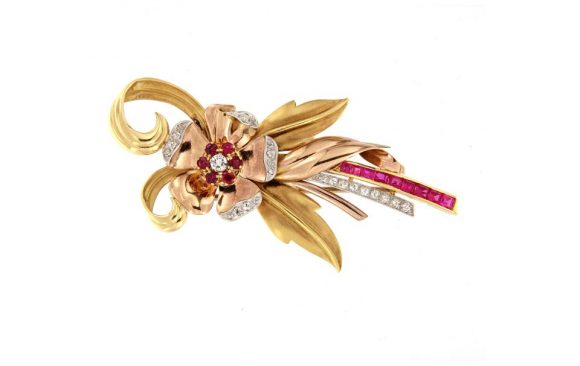At the beginning of this decade there was a shift towards more feminine styles, and the flat angularity of Art Decò broadened out into more sculptural forms.
One important bracelet, usually a strap and buckle design, was worn instead of several, and the versatile clip was increasingly popular.
At first abstract in design, from 1936 Cartier was producing clips representing turbanned blackmoors, Red Indian braves and a hand holding a flower. These figurative styles were immesely popular.
By 1937 yellow gold had returned to jewellery with success.
In That year Van Cleef and Arpels launched models of suites made in honey-comb style centred on tiny sparks of diamonds or rubies in star like settings, and thus ending the long dominance of platinum and white gold.
Designs – in harmony with the masculine-style clothes of the time – are massive and invested with a sense of movement.
Clips are made in the form of volutes, scrolls and loops, and bracelets are composed of links recalling tank caterpillar tracks and moving staircases. Narrow chokers were made of gold chain, enlivened with floreal brooches of coloured stones, often with ear-clips en suite.
This style continued in fashion well into the 1950’s.

